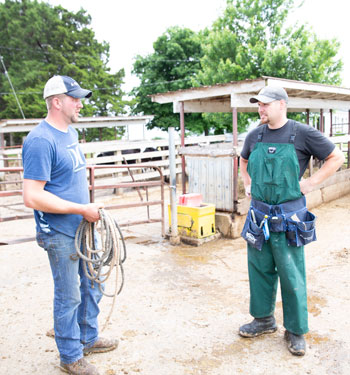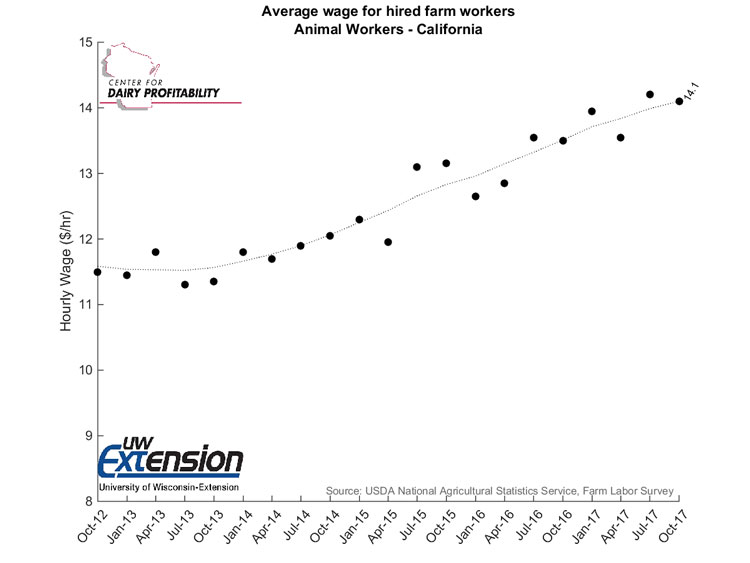
As those of us in dairy circles continue to hope for a recovery, the rest of the economy keeps growing. The Federal Reserve is projecting a sustained economic growth for the U.S., above 2 percent annually for the next two years. And the unemployment rate is projected to dip below 4 percent.
While it is hard for the dairy sectors to recruit employees from other industries, the reverse doesn’t seem to hold. As more manufacturing and related blue-collar jobs become available, many dairy employees could transfer to those sectors. That means even though dairy farms are not expanding as fast as they did a few years back, there is nothing pointing toward a decline in farm labor wages. Data for California and Lake States (Michigan, Minnesota, and Wisconsin) showed sustained upward trends in wages through last fall.


On larger dairy enterprises, hired labor can add up to 15 percent of all direct expenses. In recent discussions with some Wisconsin producers, I found out that one of two main human resource management strategies seem to be implemented by most farms.
The first strategy consists in adopting a “low intensity” management approach where a minimal amount of managerial resources is devoted to employee supervision, resulting in a higher employee turnover. The theory is that the savings on wages and supervision time will make up for turnover costs.
The second strategy is a “high intensity” management approach that requires a lot more managerial resources to supervise and train employees, resulting in lower employee turnover.
I cannot tell you directly which strategy is best. But, when asked about the main advantage of adopting a higher intensity approach, most farmers pointed not only to the lower turnover cost, but they all emphasized the lower level of stress they experienced as a dairy farm manager. Knowing that they had a reliable and well-trained workforce brought them peace of mind. They did not have to wonder if people would show up on the next day. Neither did they have to worry about the state that they would find their herd and barn in upon their return to the farm. In this period of high stress for most dairy farmers, it struck me that one of the most valued benefit of being a “good boss” was a lower level of stress.








